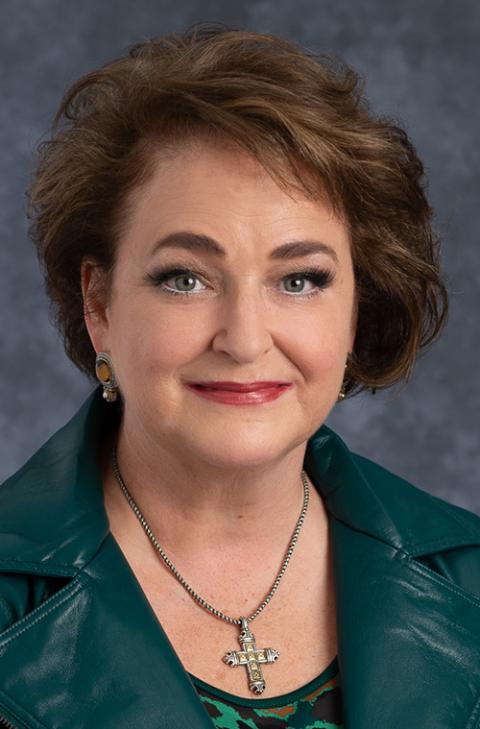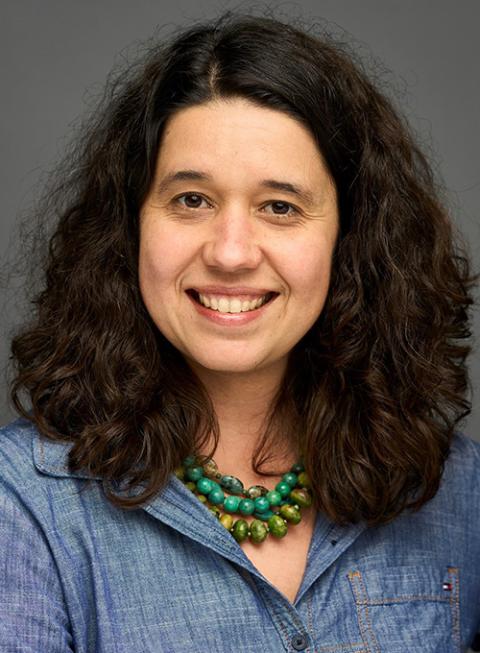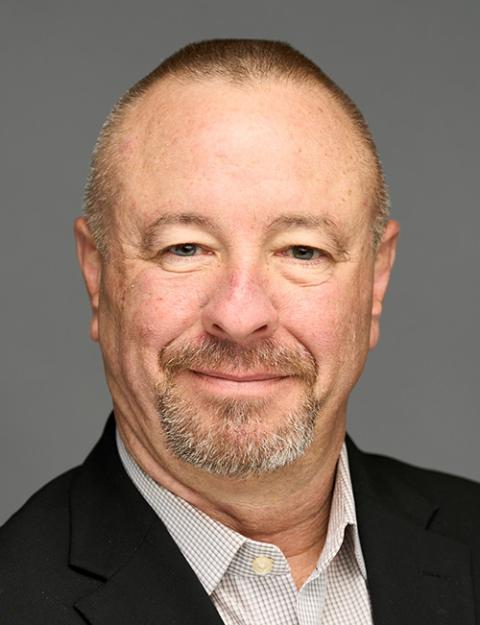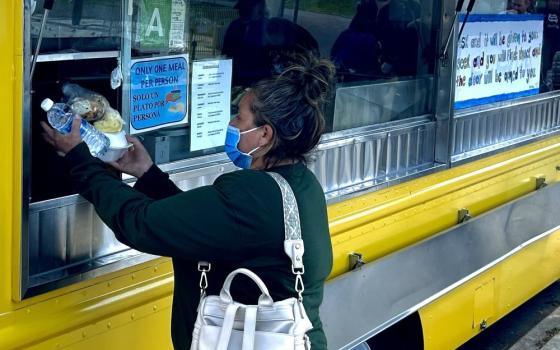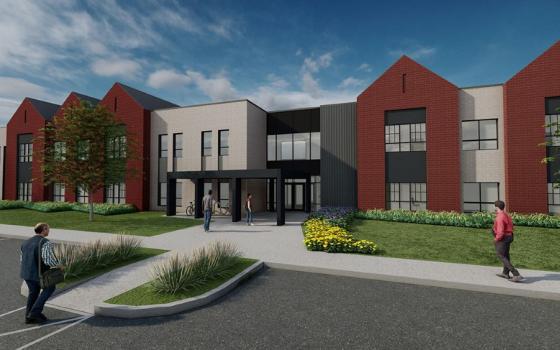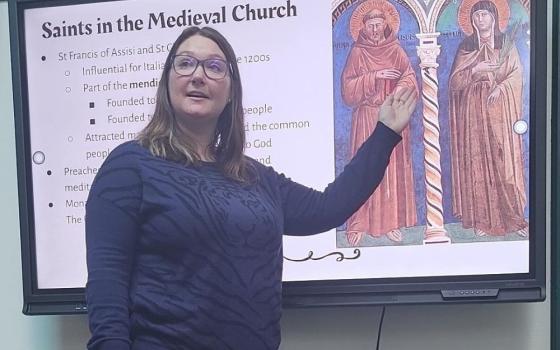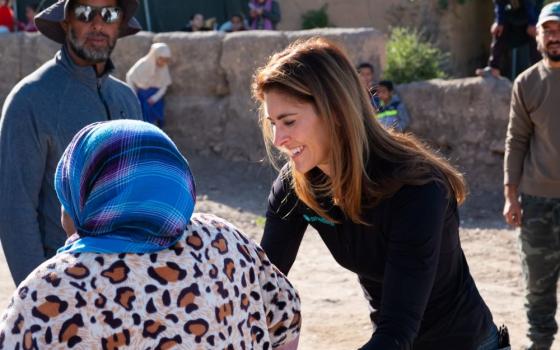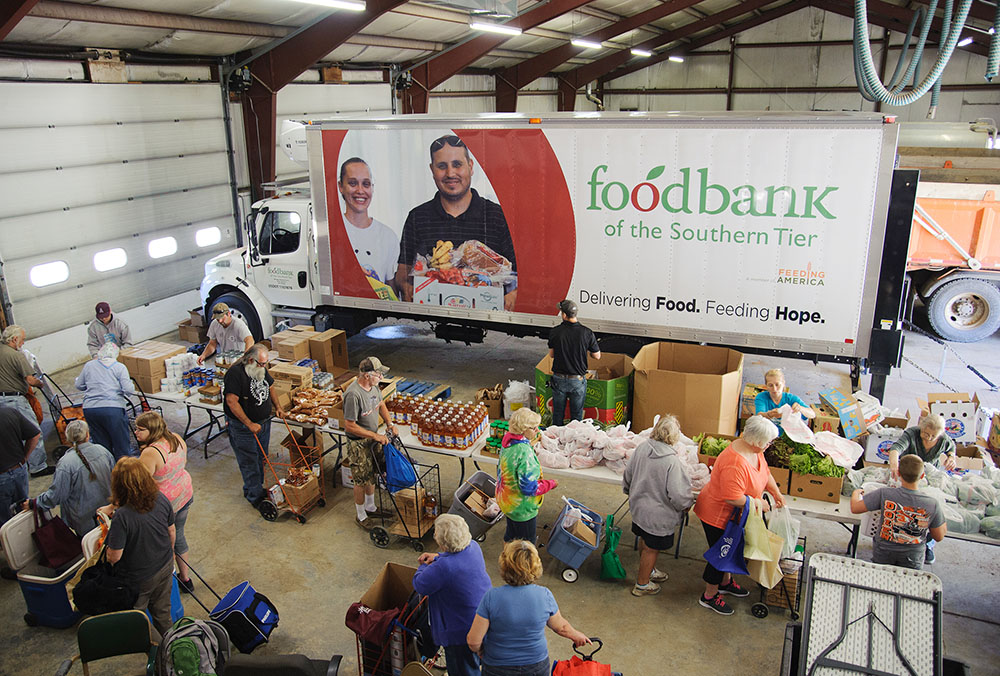
The walk-through setup of this mobile food pantry in Addison, New York, allows participants to select their own items, which aligns with the Food Bank of the Southern Tier's mission of encouraging personal choice in item selection. (Courtesy of Food Bank of the Southern Tier)
Food banks across the country are understandably wondering what the year 2023 will bring after the recent difficulties of the COVID-19 pandemic, historic inflation, and unresolved supply chain problems. Add on that millions of volunteers who helped out at food banks before the pandemic have been slow to return.
Directors of three food banks connected to Catholic dioceses recently shared with NCR about those challenges and the food banks they oversee. All three — Food Bank of the Southern Tier in New York state, Terre Haute Catholic Charities Foodbank in Terre Haute, Indiana, and Second Harvest Food Bank in Louisiana — belong to the Feeding America network of some 200 food banks.
Feeding America is the largest American nonprofit working to end hunger, and it annually distributes food to 46 million people. Food moves through member food banks to their associated food pantries, soup kitchens, school lunch and senior meal programs, nutrition education and homeless shelters.
Natalie Jayroe, CEO of Second Harvest Food Bank in Louisiana, said the last several years have been tough. But Jayroe, who became Second Harvest's director in 2006 soon after Hurricanes Rita and Katrina, said a unique community spirit in Louisiana has made her job easier.
"This spirit was in place before Katrina, and the Catholic culture here is a huge part of it," she said. "In Louisiana, everybody understands how important food is. It goes beyond nourishing bodies and getting proper nutrition. It's the thing that brings the family and community together."
Jayroe said she loves that Louisiana food producers regularly donate truckloads of food that Louisianans just love — such as fish, oysters, rice, and okra.
On the other hand, she is also moved by humble, simple gifts. In recent years, she said she has regularly received an envelope in the mail with two one-dollar bills inside, but no return address.
"That person didn't want to be thanked or recognized but was giving what he or she could afford," said Jayroe.
Strong community support is especially essential for Second Harvest, a ministry of the New Orleans Archdiocese. It is one of the largest food banks in the country, tasked with serving hungry people in 23 Louisiana parishes or counties. One in five Louisiana households is at risk of hunger. With warehouses in New Orleans and Lafayette, Second Harvest distributes more than 39 million pounds of food and groceries a year.
"Unfortunately," Jayroe said, "we're statistically at the bottom with states like Mississippi when it comes to issues like chronic poverty. We have one of the highest rates of senior food insecurity and one of the highest rates of child food insecurity."
Jayroe said Second Harvest began in New Orleans in 1982 under the leadership of Archbishop Philip Hannan, a close friend of the Kennedy family and a World War II veteran. But Hannan also reached out to other religious leaders in the city. He wanted Second Harvest to be an ecumenical ministry. Within a year, Second Harvest was distributing food to faith-based organizations and nonprofits.
Natasha Thompson, CEO of the Food Bank of the Southern Tier in New York, said that the bank she directs also opened in the early 1980s. The resulting food bank was — and still is — a Catholic Charities outreach of the Rochester Diocese.
Thompson said that the six New York counties that the food bank serves are in a region that's become economically challenged. "There used to be a lot of manufacturing here but that all went away."
In New York's southern tier, there's plenty of food insecurity and hunger among the half-million people her bank serves, she said. In 2022, according to Thompson, "we had 1.3 million requests for food and we distributed 13.5 million pounds of food through our partner agencies."
Thompson, a Rhode Island native, has made a career of working for food banks. She's especially inspired by the fact that many have Catholic roots. In fact, even the food bank concept came from an eccentric but devoted Catholic layman who'd moved to Phoenix in the 1960s. The "father of food banks," she said, was John van Hengel. A man who needed to keep busy, he joined St. Mary's Church there and began helping in the soup kitchen.
It was a chance encounter in 1967 with a destitute mother of 10 children that inspired van Hengel to invent a new way to address hunger. This mother told van Hengel how she regularly retrieved good but discarded food from refuse bins behind grocery stores. She scavenged enough good food to keep her kids healthy. What was needed, she thought, was a place to deposit food and withdraw it when needed. A food bank!
Van Hengel agreed. Good food was discarded or wasted while people went hungry. With the support of his parish, he soon launched the first food bank, St. Mary's Food Bank. Deeply committed to the concept, he later launched a nonsectarian nationwide network of food banks — known today as Feeding America. And he traveled around the world, promoting food banks.
Today, said Thompson, Feeding America is critical to her own food bank and others around the country. Only a small number are specifically Catholic like hers. Among them is the Food Bank of New Hampshire, the only food bank in that state. It's sponsored by Catholic Charities there. Many more food banks in Feeding America's network were or still are ecumenical projects.
"Feeding America establishes the guidelines under which we operate," Thompson said.
"They act as a national clearinghouse for food that's donated by manufacturers, retailers, farmers," she continued. "If you're Kraft Foods and you have eight truckloads of cheese incorrectly labeled as low fat, you have two choices. You can throw it out or you can donate it to Feeding America and its 200 food banks."
In New Orleans, Jayroe agrees. "Feeding America," she said, "helps us navigate relationships with corporations regionally so that we can get food from them. In south Louisiana, the 42 Walmarts give our food bank alone more than 10 million pounds of food a year. Primarily, it's perishable healthy, meat, dairy and produce. That's what we want. Hunger is as much about nutrition. Not every pound of food is equal."
Thompson said Feeding America operates by offering twice daily auctions of available food.
"It's a sort of eBay for food banks," she said. Banks bid on food they want and must pay for shipping. Smaller food banks, like hers, team up with others to bid on what they need. It might be a truckload of oranges from Arizona.
Advertisement
Feeding America, she adds, also acts as a clearinghouse for grants.
John Etling, CEO of Terre Haute Catholic Charities Foodbank in west central Indiana, couldn't agree more about the importance of Feeding America. Now in its 40th year, the Terre Haute bank serves seven Indiana counties and is an outreach of the Indianapolis Archdiocese. Etling has been the director for 18 years but grew up there watching his dad in a similar role.
"This food bank organization started with my father who was not then a Catholic," Etling said. "Dad came from humble beginnings, got a football scholarship to Indiana State University and became a teacher. In schools, he saw poverty in our communities on a granular level. Typically, 90% of the student population participated in the free school lunch program."
According to the food bank's website, one in six people and one in four children living in west central Indiana are facing hunger today.
Etling's father befriended local Catholic priests, and food outreach in Terre Haute began through a shelter program. "It operated on a shoestring budget," John said.
In those days before cellphones, his dad kept a phone with the shelter's number on his nightstand. "If someone needed help in the middle of the night, he'd respond."
Almost 50 years later, according to Etling, distributing food is now far more complex. He said that modern technology is needed for food banks to be predictive and intentional in meeting needs. "We move out about 4 to 5 million pounds of food a year," he said.
In March 2020 as the pandemic began, Etling announced on local TV stations that mobile pantry trucks with boxes of food were heading out to 12 remote rural locations shut down by COVID-19. That mobile pantry program continued for a year.
These days, Etling said that he's often deeply moved by Google Voice phone messages left by people helped through the food bank. "We don't ask them to leave their names but to tell us how the ability to get food impacted them that day. The messages are in their own voices and they are so powerful."
Like other food bank executives, however, Etling also occasionally hears from local critics. They complain that people receiving food bank help must not be working hard enough. Or that they're lazy.
"I think Matthew 25 is a very good response," Etling said. "Catholic social teaching reminds us that we're called to help people when they need it. We're not here to judge or interrogate them. We do try to put in some guardrails, but if somebody takes advantage of us, that's on them."
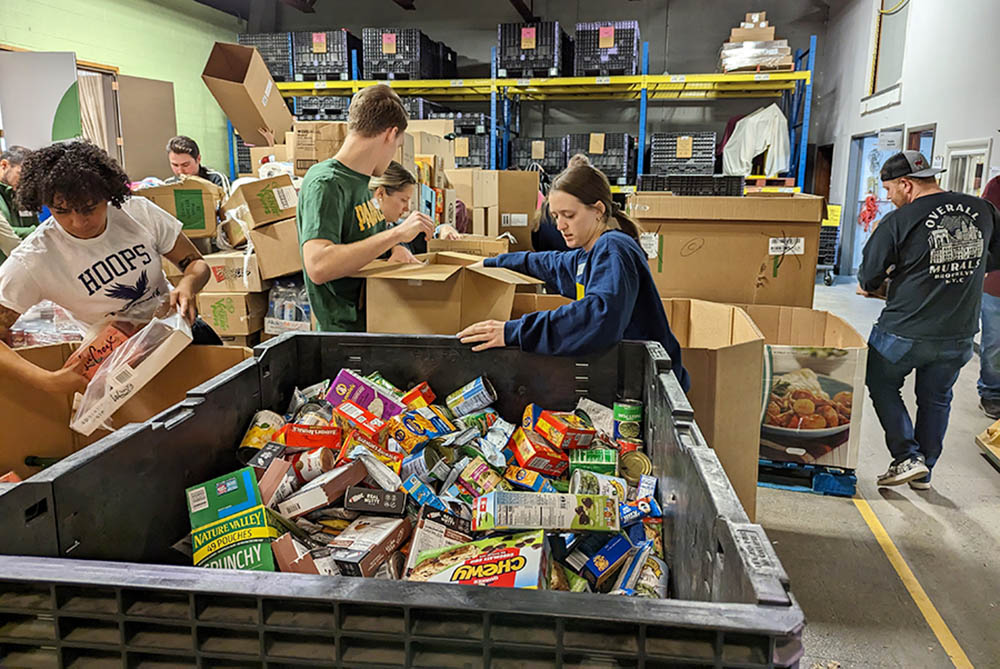
Volunteers sort dry bulk items at the Food Bank of the Southern Tier’s MLK Day of Service event. More than 160 volunteers participated in the event on Jan. 16 this year. (Courtesy of Food Bank of the Southern Tier)
Like Etling, Thompson gets local pushback from time to time. She hears it most when the Bank of the Southern Tier advocates for public policies that could help hungry people. Feeding people and advocating for them are both social justice works, she said. "We're supporting people who aren't making enough money. Why shouldn't people earn enough to pay their bills when they're working full time?"
Thompson said she has a poster in her office with a quote from liberation theologian Archbishop Hélder Câmara of Brazil: "When I give food to the poor, they call me a saint; when I ask why the poor have no food, they call me a communist."
Jayroe, speaking perhaps for food bank directors around the country, suspects that the last several years — though painfully difficult — have sometimes been a blessing in disguise.
"COVID really helped people to understand how important and central food banks were to a significant number of people in every community," she said. "We are here to show how a community cares for itself. But we all also have a sense of urgency and know that we're not doing enough."
[This article was made possible by a grant from the Hilton Foundation.]

